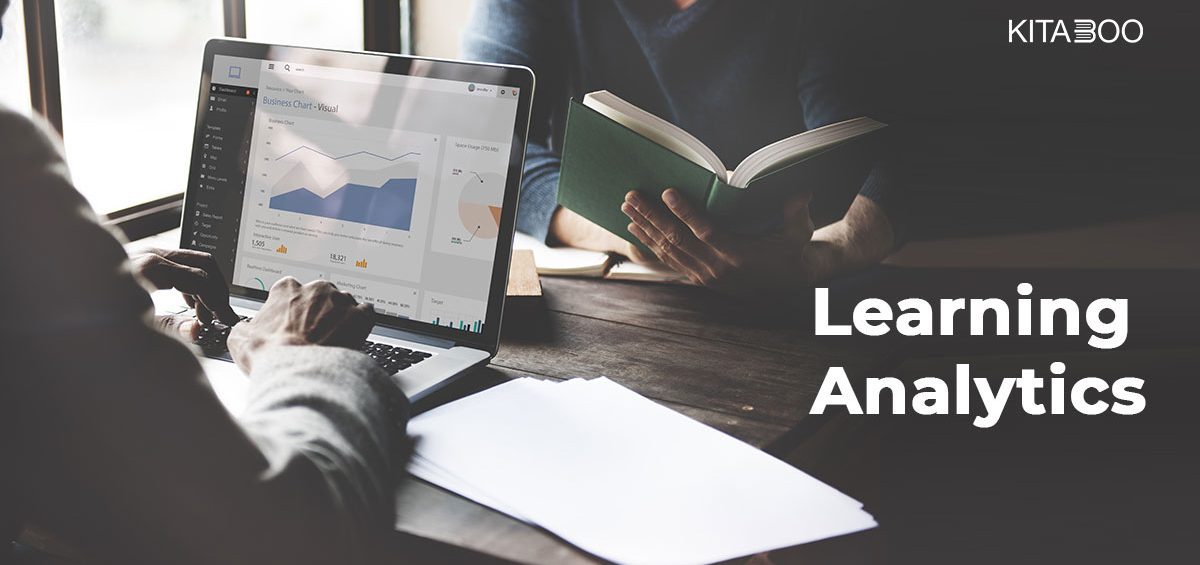Learning has become flexible in the digital world. Students can learn with just an electronic device and internet connection without the need to attend universities/schools. Thanks to the digitalization of learning systems, teachers, universities, and schools were able to educate their pupils even during the pandemic. Schools and universities have gone digital as it is more flexible and easy, but the advent of this has presented a new problem. How will you know if your students are getting the right information to make them successful? The solution for this is learning analytics.
To this end, let’s explore learning analytics and how it can boost student success in this blog.
What is Learning Analytics?
Learning analytics is the collection, analysis, and reporting of information relevant to students’ learning activities and performance. It is measured to understand the environment in which the student learns and to optimize the resources to enhance student performance.
Learning analytics collects all the relevant information about students, revealing their strong and weak zones. This can be used to enhance and tailor the resources to improve a student’s academic performance.
Learning analytics covers four categories:
- Descriptive – It tracks impressions for a certain period to reveal pupils’ learning patterns and progress.
- Diagnostic – Unlike descriptive analytics, it reveals why something happened using data science.
- Predictive – It projects a student’s academic progress for the future based on past data.
- Prescriptive – Proposes ways to boost student progress and retention based on data obtained.
How Learning Analytics Improves Student Success?
Let’s discuss how you can leverage learning analytics to enhance student performance.
Insights
We must first consider the fact that teachers are not dealing with a small crowd; the number of students in an institution is generally larger.
Teachers cannot track every student’s progress and evaluate their performance individually; it is an exhaustive process. Let’s not forget the students; without instant results and gratification, they will not muster the required confidence, leading to poor focus and performance.
Learning analytics can solve this. Through descriptive and diagnostic analysis, teachers can get valuable data and insights into their pupil’s daily progress. This can help teachers track students’ performance and make curriculum changes to improve their learning experience.
Using these insights, teachers can segment their students into multiple groups based on their progress and performance. Segmenting will help teachers tailor the right resources relevant to the students, improving student success.
Better Communication
One major obstacle in learning management systems (LMSs) is communication. Students may find it hard to communicate with their teachers at the right time as the only channels available are emails, video lectures, chats, and forums.
In the case of universities, students can reach out to their professors face-to-face and get their queries sorted out. Digital learning systems do not necessarily offer this communication flexibility.
How will students’ doubts be cleared if they cannot effectively communicate with their teachers?
This is where prescriptive analysis can help. Based on the previous data, teachers can create detailed learning resources that educate their students and address their queries.
Based on the questions asked by students, teachers can also prepare FAQs that answer pupils’ questions without the need for constant communication.
Personalized Learning
Many universities have overflowing classes, which can intimidate students and hinder their confidence. Further, not every student will have the same learning curve; some grasp information quickly, and some need time. This is where student data from learning analytics can help educators.
Teachers can use the analytics data to create customized lesson plans based on students’ learning curves and help them learn better.
LMSs use personalized learning systems that only recommend relevant resources to the students based on their skills and needs. This type of learning where teachers can adapt the resources pertinent to the student is called adaptive learning. Here are some of its benefits in conjunction with learning analytics:
- Learning analytics shows the teacher what a particular student wants and lets them adjust the curriculum accordingly, minimizing their workload.
- Adaptive learning only shows resources that match a student’s skill set by omitting the ones they don’t need. This improves their confidence and retention.
- As learning analytics understand students’ learning patterns, they can show personalized learning schedules meant for the student.
Retention
eLearning can often overwhelm students, making them lose interest in the course and eventually leading to them failing.
You can avoid this using learning analytics as it provides information on how the student has mastered the course as well as their progress. Data insights can also reveal at-risk students who might end up failing the course.
Such predictive analysis can help educators develop interventions and alternative course paths for at-risk students to make them reach their full potential and retain them.
Course Recommendations
Let’s talk about eCommerce for a moment.
What happens when you purchase or add a product to your cart? The eCommerce store recommends better products than the one you’ve chosen. This is called upselling.
Well, the same principle applies to learning management systems as well. These systems have recommendation engines that only show courses based on a student’s current skill or curriculum.
For example, imagine a student has completed a course on ‘Java Basics.’ Now, the recommendation engine will only show advanced Java courses instead of irrelevant ones.
Learning analytics will have information on what the student’s searched or looked for in the library. Based on their behavior data, courses relevant to their searches will be recommended.
Course recommendations make the students’ learning process easier by recommending personalized courses, saving them time and increasing retention.
Curriculum Revamp
Learning analytics reveal the courses where your students face the most problems. These demonstrate which content might be challenging to understand or impact a student’s learning curve.
Educators can thus identify these at-risk courses and make changes to them in a way that is easy to understand for the learners. However, you must not follow this technique whenever your students find something hard to understand.
Sometimes, it is necessary to evaluate the teaching methods and make them more friendly for learners to grasp. This is how learning analytics can minimize the workload of educators and improve students’ success while making learning fun for them.
Conclusion
eLearning is the trend now, and its use cases are only set to expand further.Regardless of the medium, the ultimate goal of educators should be to provide the maximum value for pupils. To do this, you must first understand your student’s progress and performance. Only then can you deliver the right learning experience.
Learning analytics collect all the information relevant to your students. You can leverage these insights to improve your courses, recommend relevant courses, and make the lessons more interactive and easy for the students.
Further, platforms like KITABOO can help you develop a robust learning management system using learning analytics for your institution. You can educate your students, track all the pertinent information and provide a holistic learning experience for your students that can lead them to success.
To know more, please write to us at KITABOO@hurix.com
Discover How An Ebook Conversion, Publishing & Distribution Platform Can Help You
Kitaboo is a cloud-based content platform to create-publish & securely distribute interactive mobile-ready ebooks.
You May Also Like








